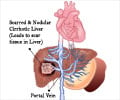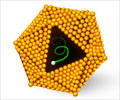The outcomes of cirrhotic patients who underwent liver transplants for nonalcoholic steatohepatitis (NASH) versus alcoholic liver disease (ETOH) were compared by researchers
The outcomes of cirrhotic patients who underwent liver transplants for nonalcoholic steatohepatitis (NASH) versus alcoholic liver disease (ETOH) were compared by researchers at the University of Miami School of Medicine. They found no statistically significant differences in post-transplant survival rates between the NASH and ETOH groups.
Study findings are presented in the December issue of Liver Transplantation, a journal published by Wiley-Blackwell on behalf of the American Association for the Study of Liver Diseases.According to the National Institute of Diabetes and Digestive and Kidney Diseases (NIDDK), part of the National Institutes of Health, NASH affects 2%-5% of Americans and ranks as one of the major causes of cirrhosis in the U.S. behind hepatitis C and alcoholic liver disease. Incidences of both NASH and nonalcoholic fatty liver disease (NAFLD) are increasing, possibly because of the greater number of Americans with obesity. Obesity also contributes to diabetes and high blood cholesterol, which can further complicate the health of someone with NASH. Because it is often a "silent" liver disease, NASH can lead to cirrhosis and permanent damage. Once serious scarring or cirrhosis is present, few treatments can halt the progression. Liver transplantation remains the only treatment for advanced cirrhosis with liver failure and is increasingly performed in people with NASH.
Vishal Bhagat, M.D, and colleagues demonstrated that liver transplant is an appropriate treatment for NASH patients, with survival rates comparable to those for ETOH patients. The team performed a retrospective chart review on all patients who underwent liver transplant for cryptogenic cirrhosis with NASH phenotype and alcoholic cirrhosis at the University of Miami from January 1997 through January 2007.
Cryptogenic cirrhosis was defined by absence of significant alcohol use (>20 gm/day), negative tests for viral hepatitis, negative autoimmune markers such as anti-nuclear antibody and anti-mitochondrial antibody, and negative markers for hemochromatosis, Wilson disease and alpha-1 antitrypsin deficiency.
The alcoholic cirrhosis (ETOH) group included patients who had history of significant alcohol, had no biochemical, serological and histological evidence of other known causes of cirrhosis, and underwent liver transplant from January 1997 through January 2007. Patients with hepatocellular carcinoma (HCC) and alcoholic cirrhosis with NASH phenotype were excluded from the ETOH group.
Baseline data on alcohol use, BMI, blood pressure and fasting serum levels of glucose, total cholesterol and triglycerides was recorded for both groups prior to liver transplant and after 6 months post-liver transplant. Demographic information was also collected including: recipient age, recipient sex, recipient ethnicity, donor age, cold ischemia time, biopsy proven acute and/or chronic rejection, biopsy proven recurrence of moderate to severe steatohepatitis in the transplanted liver, causes of retransplantation, graft survival, causes of death and patient survival.
Advertisement
In both the NASH and ETOH groups, sepsis (with or without multisystem organ failure) was the most common cause of death post-liver transplant, which is consistent with previously published data, followed by cardiovascular causes in the NASH group and malignancies in the ETOH group. Although higher number of patients died from cardiovascular causes in the NASH group (26%) compared with the ETOH group (7%), the difference did not reach statistical significance. "Cardiovascular mortality among NASH patients was much higher than published autopsy results in liver transplant patients and stresses the importance of control of the metabolic syndrome post-transplant in NASH patients," added Dr. Bhagat.
Advertisement
Source-Eurekalert
RAS














